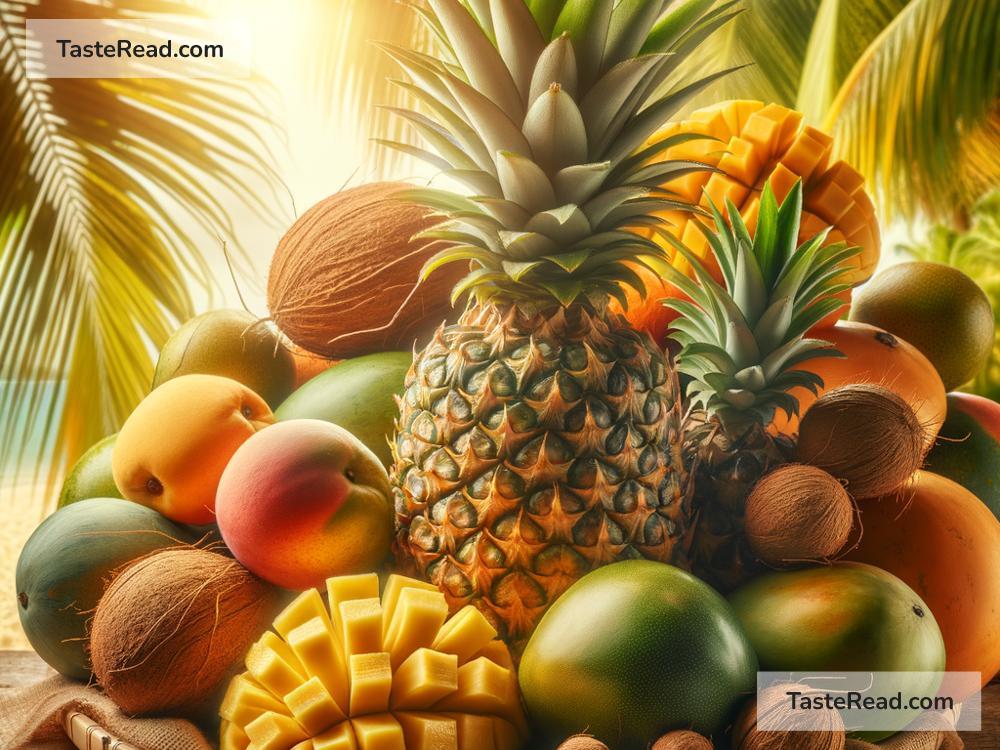How Pineapples Became the King of Tropical Fruits
When you think of tropical fruits, pineapples probably come to mind first. With their golden flesh, spiky skin, and sweet tangy flavor, they’ve earned a reputation as the king of tropical fruits. But how did pineapples rise to fame and become such an iconic food, symbolizing everything from vacations to celebrations? Let’s dive into their fascinating story.
Pineapples Are Special from the Start
Pineapples originally came from South America, specifically around the areas we now know as Brazil and Paraguay. They grew wild there before indigenous peoples began cultivating them. The Tupi-Guarani people, who lived in this region, called the fruit “nanas,” meaning “excellent fruit” — and they were right!
From there, the pineapple’s journey began. It slowly spread across Central America and the Caribbean, where warm climates helped the fruit thrive. When European explorers arrived in the Americas, they were amazed by the pineapple. It was unlike anything they had seen before. The Spanish even called it “piña,” because its shape reminded them of a pine cone. The English added “apple” to the name, since the fruit was sweet and juicy, similar to an apple.
Pineapples Were a Luxury in Europe
In the 15th and 16th centuries, pineapples were considered exotic and rare. After Christopher Columbus brought pineapples back to Spain, their fame spread across Europe. Wealthy people adored the fruit for its unique flavor, fragrance, and beauty. The downside? It was expensive — extremely expensive. Growing pineapples in European climates wasn’t easy, and importing them from the Americas was time-consuming and costly.
As a result, pineapples became a symbol of wealth and status. Royals and nobles displayed them at their feasts to show off their wealth. Sometimes, people didn’t even eat the pineapple; they only used it as a centerpiece to impress their guests! If you couldn’t afford a real pineapple, you could rent one for your party. Yes, renting pineapples was a thing.
Pineapples Travel the World
The pineapple didn’t stay in Europe forever. It started spreading to other parts of the world, but this took time. In the 17th and 18th centuries, European settlers and traders carried pineapples to Asia, Africa, and the Pacific Islands. People loved its flavor wherever it went, and new regions began cultivating the fruit.
Hawaii became particularly important in pineapple history. Although the fruit wasn’t native to Hawaii, it grew well there because of the tropical climate. In the late 19th and early 20th centuries, businesspeople like James Dole saw the potential for pineapple farming in Hawaii. Dole established large plantations and found ways to can and preserve the fruit so it could be shipped worldwide. Soon, Hawaiian pineapples were famous everywhere, and the fruit became closely tied to the island’s image.
The Pineapple as a Symbol of Hospitality
Over the years, pineapples gained another role besides being delicious. They became a symbol of hospitality and friendship. This tradition began in Europe, where people used pineapples as decorations in homes, on furniture, and even in architecture. A pineapple carved onto a gate or door represented warmth and welcome.
The pineapple’s association with hospitality spread to the Americas, especially in the southern United States. Hostesses would place pineapples on their tables or bake pineapple cakes to greet visitors. This connection between the fruit and kindness made the pineapple even more beloved.
Tropical Dreams and Pop Culture
Today, the pineapple is a symbol of tropical paradise. It’s on everything from beach towels to vacation advertisements. Its bright, cheerful appearance reminds us of sunny weather, relaxing days, and exotic adventures. Pineapple-flavored drinks, desserts, and snacks keep the fruit firmly tied to the idea of fun and leisure.
Pineapples also have entertaining cultural moments. Take, for example, the famous pineapple on pizza debate — some people love it, while others strongly dislike it. Pineapple-shaped décor and quirky pineapple-themed fashion constantly pop up. The fruit is even a star in movies and cartoons, like SpongeBob SquarePants, who lives in a pineapple under the sea.
Why People Love Pineapples
There’s no doubt pineapples deserve their title as the king of tropical fruits. Their sweet-but-tangy taste appeals to millions of people around the world. They’re versatile too — you can eat them fresh, juice them, grill them, or use them in recipes ranging from fruit salads to stir-fries to desserts.
Beyond their flavor, pineapples stand out because they’re simply fun. Their unusual appearance — a prickly crown on the outside with juicy golden flesh inside — makes them visually striking. They’ve also built a rich history, carrying meanings of wealth, hospitality, and happiness.
A Fruit That Rules the Tropics
Pineapples are more than just a fruit. They’ve traveled continents, symbolized warmth and luxury, and found their way into pop culture. From their humble beginnings in South America to their current status as an international icon, pineapples have earned their crown as the king of tropical fruits. Whether carved into décor, sipped in a cocktail, or enjoyed fresh, pineapples bring joy wherever they go. And that’s why we love them! 🍍


